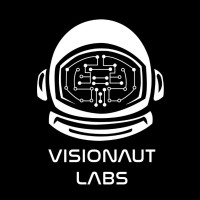Ever wondered why a product is designed the way it is? If yes, then you’ve entered the realm of User Design. User Experience Design is a data-driven process whereby a designer or a group of designers aim to create a novel design, not just for the sake of novelty but rather to bring about an improvement in the existing designs used by consumers to accomplish a task.
User Experience Design is a holistic view of user needs. It consists of a user interface cycle, a four-step cycle that aims to meet the design objective/(s). This cycle begins with the designers gathering data about their users. This is a very crucial step in the whole process because the design cycle aims to make the lives for the users better by improving their current practices. Hence, there is not much use in designing if the designer is unaware of the users and the real ways using which they accomplish tasks. User is, without any doubt, central to this whole process, and his or her satisfaction is the objective to be achieved.
Data about the users can be collected in many ways. Designers can conduct surveys, focus groups, or in-depth interviews. These measures differ in the degree of interaction with the users. While studies involve the least amount of communication, interviews involve direct interaction with the users and, thus, provide a highly interactive environment in which a designer can gauge a rich stream of information about the users. Therefore, it is recommended that if surveys are being used, then they should be considered as the platform on which to conduct further research on the users using other methods of gathering. For example, surveys can be followed by focus groups or interviews.

The next phase in the design cycle is that of ‘Designing Alternatives’. In this phase, using the data we gathered in step 1, we design alternatives that we think will satisfy the users’ needs. We need to know both the implicit and explicit requirements of the users. Explicit needs are stated directly by the users as to what they think they need. Whereas inherent needs require a degree of subtlety on the part of the designer to be able to infer the needs of the consumers which, while not stated by the users directly, have been implied by them in their responses,
The third phase in the cycle is where we build ‘Prototypes’. Prototypes can be thought of as early models of the design. It is be noted that they are not the final product but rather an imitation of it. Prototypes can be low fidelity prototypes that are only slightly similar to the final design in form or function, or they can be high fidelity prototypes that are very similar to the final design in both form and function. The type of prototype used depends on the goals of the exercise. Prototypes are very important. They allow us to save resources such as time and money by enabling us to build quick models which we can then use to iterate the design if needed. Overall, prototypes help us to evaluate the objectives of our design and to see if they are being met or not.
The last stage in the cycle is that of ‘Evaluation’. Here, the designers evaluate the design in terms of whether it satisfies the users or not. This can be done by collecting data, either qualitative or quantitative. Designers can measure the cognitive load that the users experience while using that design, and they can gauge the feelings experienced by the users. They can also measure the efficiency of their design using measures of learnability, which tells the designers how convenient it is for the users to carry out the task and memorability, which tells how conveniently users remember the process of carrying out the job.
At the end of this cycle, designers aim to have developed a design that achieves their objectives. However, this cycle is not to be thought of as linear. Instead, it is circular as the designers find themselves continuously trying to update the current designs to adapt to the changing needs of the consumers.
